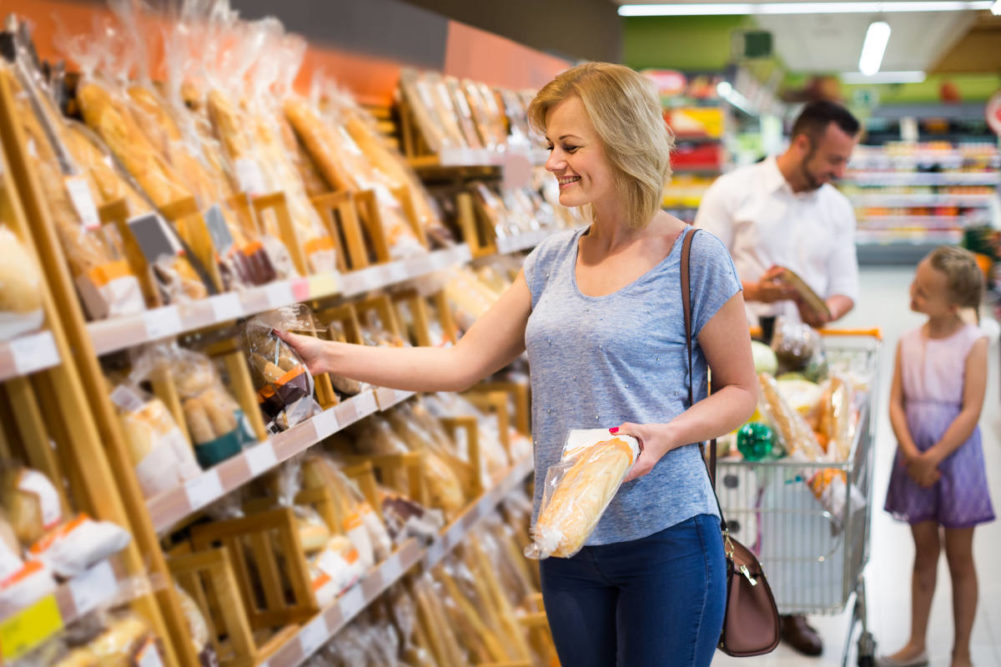Approximately two-thirds of consumers (67 percent) find the recyclability of packaging important, but according to the 2021 Global Buying Green Report released by Trivium Packaging, many consumer perceptions do not line up with scientific facts.
While 55 percent of consumers associate plastic with “harmful” and 36 percent associate plastic with “wasteful,” if manufactured and disposed of properly, the benefits of plastic packaging can be beneficial when you factor in the environmental impacts of food waste.
Backing programs such as flexible packaging recycling, while also informing consumers about the benefits flexible packaging can have in terms of preventing food from spoiling and keeping it safe throughout the supply chain can go a long way in striking a balance.
“What we really need to have is a more sustainable food system,” said Dr. Claire Sand, owner of Packaging Technology and Research LLC. “Consumers are telling us that’s what they want. When they see plastics on the beach, minimizing plastics become the priority, sometimes without considering other impacts. We really need to strike a balance and focus on the science of what packaging can do in terms of food waste as part of the environmental impact equation.”
The food industry must come together to dispel misconceptions, Sand noted. Grocery retailers are in a unique position due to the nature of the close relationship retailers have with the customers who come into their stores every week.
Meanwhile, brands can help correct misconceptions by putting more information directly on food packaging. Sand noted an example of a company based in the UK that includes information about environmental impact of both the food and the packaging on the label. Making it clear for consumers, helps shoppers make better judgement calls, noted sustainability and packaging expert Bob Lilienfeld, president of Robert Lilienfeld Consulting.
“Consumers do not have the scientific information to make well-informed sustainable packaging choices,” Lilienfeld said. “We need to provide accurate information and take responsibility for helping in the education process. We need to give them the information.
A big part of solving the problem is not only educating consumers more about packaging, but also helping them understand the impact of food waste — especially the food waste that happens in the home.
Out of the 931 million tons of food wasted each year, approximately 61 percent occurs in the home. Total annual food waste contributes to about 8-10% of global green house gas emissions, according to the United Nations Environment Program’s Food Waste Index Report 2021.
In the current climate, consumers are even more incentivized by concerns over rising food prices caused by supply chain challenges.
Helping customers reduce food waste at home, is something retailers can take the lead on, Lilienfeld pointed out.
In the digital age, retailers can show consumers exactly how to shop for a week and help them understand the ingredients they buy for a meal on Monday can be used in a different way for Wednesday night dinner.
“What consumers may not realize is that first, it saves them money,” Lilienfeld said. “Secondly, it expands their repertoire of what they serve, and people like the novelty. Now is the time of the year where you have the best opportunity to talk about that because the turkey dinner of today is tomorrow's soup.”
Lilienfeld also suggested that retailers and suppliers alike, advocate for science-based solutions. Otherwise, it can be easy for companies to make packaging decisions around what consumers say they want based on limited information, versus what science indicates is the best path forward.
Currently, many consumers are interested in compostable packaging, which has been marketed as a sustainable solution. But in truth, compostable packaging sometimes doesn’t keep food as well protected as other packaging types. When the packaging decomposes it releases greenhouse gasses that are also harmful to the environment, and industrial composting sites that accept the compostable packaging are rare.
“Doing what is right for the environment takes leadership and ethics. Consumers want to see this kind of leadership. I think we are getting to the point where the consumers are not going to take inaction on the environment anymore,” Sand said. “The brands and retailers who really stick their necks out and say, ‘What we’re doing is right, we know it’s not compostable, we know you’ve heard compostable is fantastic, but we’re going to make the right decision and we’re going to do this…’ I think we’re going to see those brands resonate with consumers and really win the marketplace.”
Retailers can find sustainability education resources and tools from organizations such as Kwik Lok, who offers a suite of sustainability resources available to retail partners.


